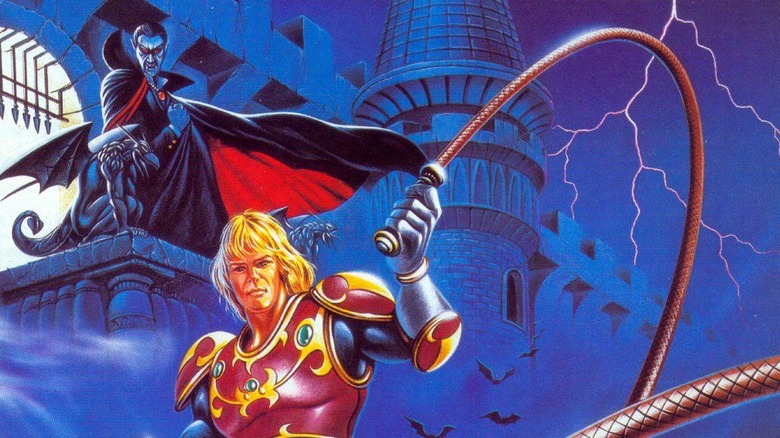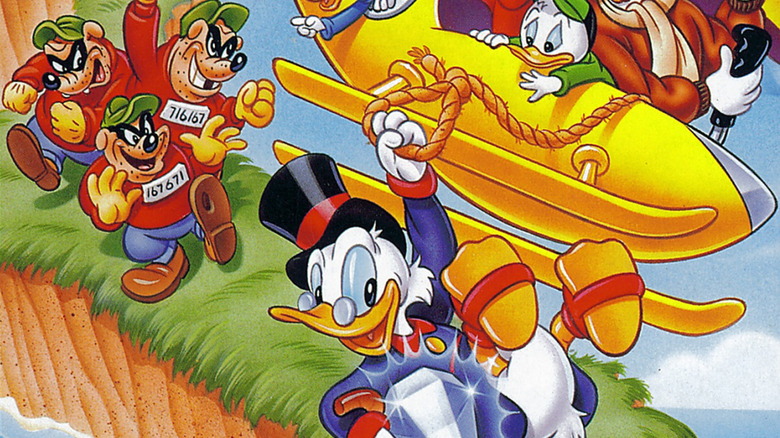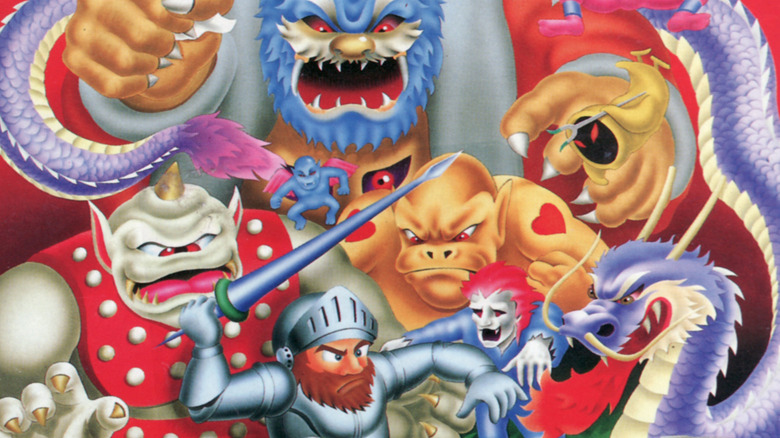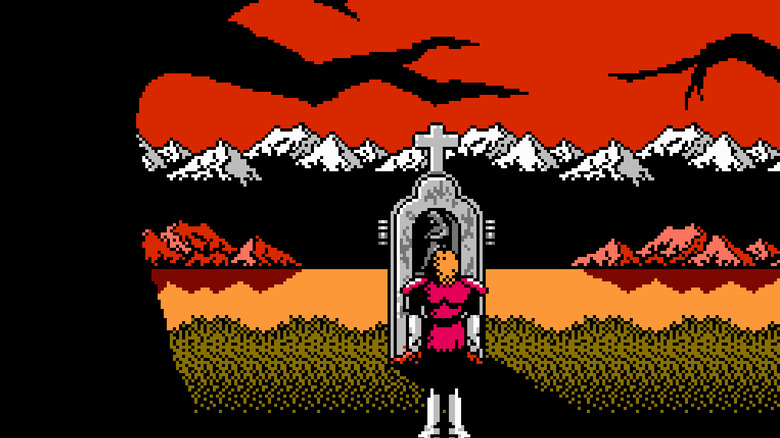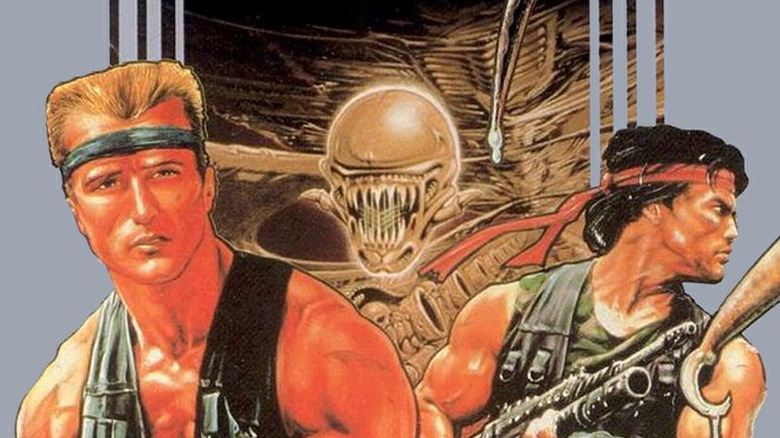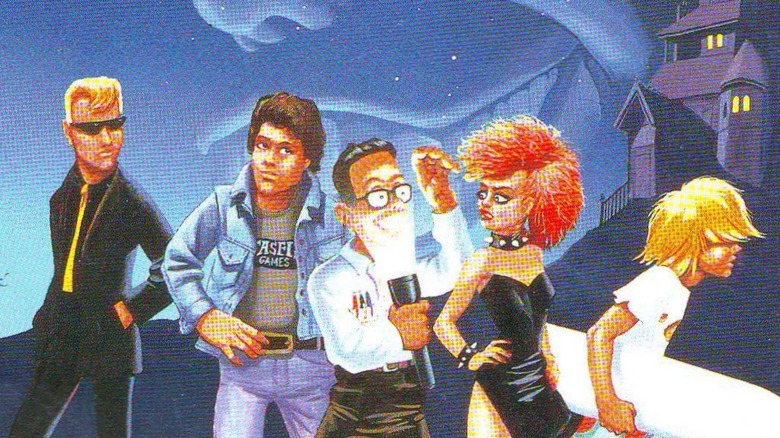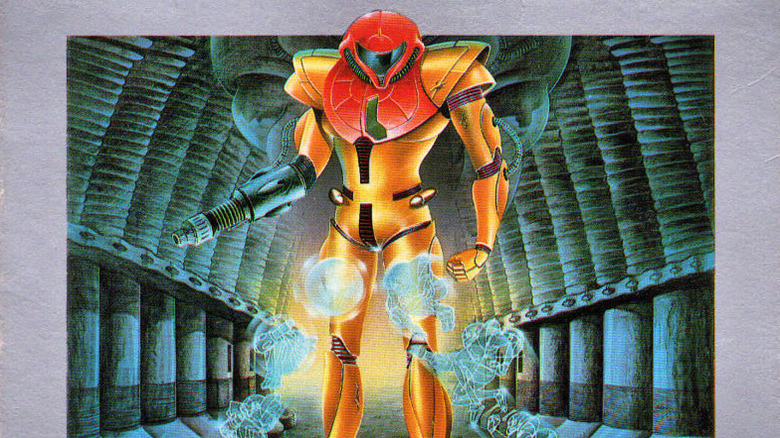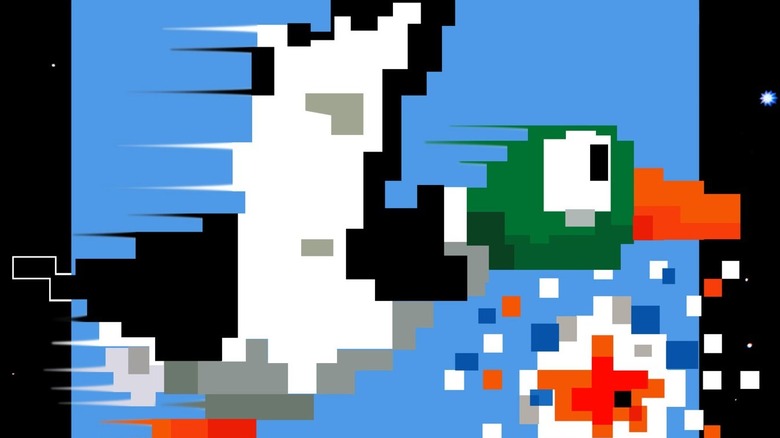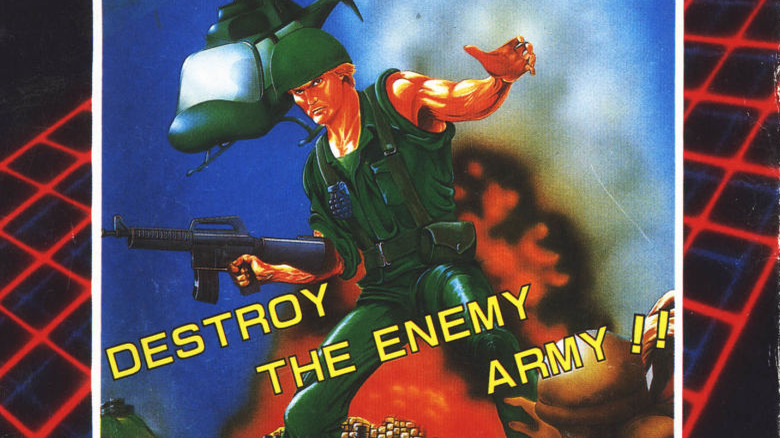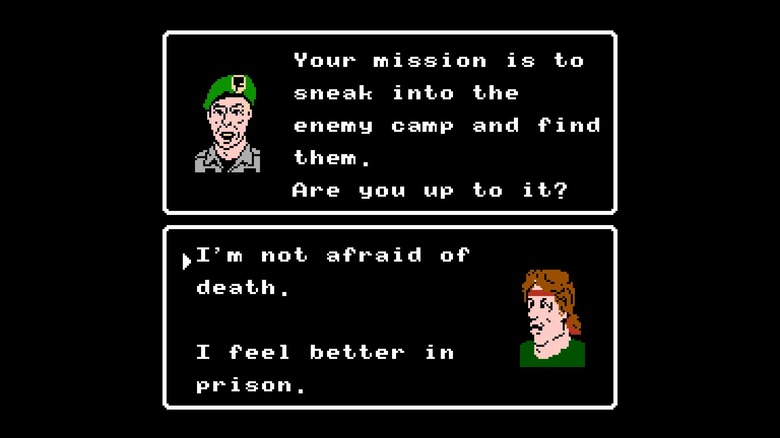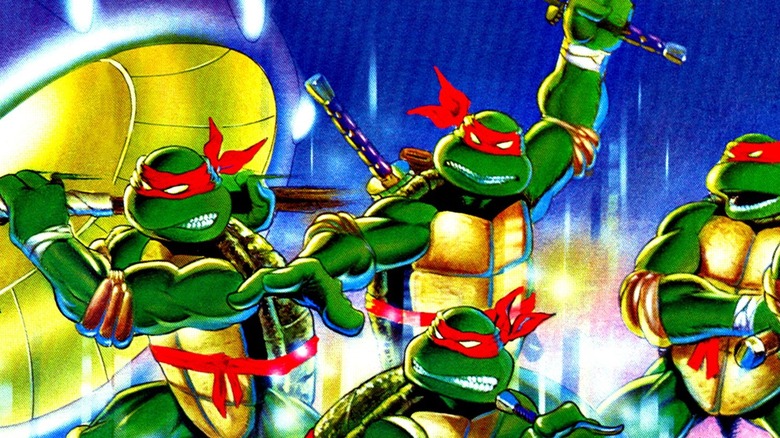Secret Nintendo Game Endings You Never Knew About
The phrases "Justin Bailey," "Konami Code," and "Warp Zone" are part of a lexicon that stretches back into the mid-1980s and centers around a certain gamer lifestyle that's all but forgotten. We've come a long way since the age of Nintendo Power magazine and the early days of video game secrets. Controls have become more complex, narratives have grown immense in their branch and reach, and the internet has essentially replaced the once-hallowed analog network of gamer hearsay.
The industry may very well have outgrown some of the technology behind these age-old techniques, but the mysterious and often irreverent spirit is the same. As video game secrets make more and more of a comeback in titles like the Dark Souls series and The Legend of Zelda: Breath of the Wild, we're paying tribute to the games that came before by taking a fond look at a few secret, hidden, or surprise endings to Nintendo classics you (probably) never knew about.
Scrooge could lose his whole fortune in DuckTales
Capcom brought the adventures of Scrooge McDuck to life in 1989 with the release of DuckTales, a best-selling action platformer developed by a team that featured key personnel from the Mega Man franchise. This adaptation of the late '80s animated Disney series set a high-water mark for the original NES, and remains one of the most applauded titles of the 8-bit era. DuckTales challenges players to race through five levels of globetrotting adventure in search of fortune, glory, and the title of "World's Richest Duck." And while it's commonly understood that DuckTales features multiple endings based on how much treasure players could accumulate, one lesser-known result would elude many would-be treasure hunters.
The most furtive DuckTales finale was ultimately the result of a hidden mechanic, and could only be seen if Scrooge finds the treasures but loses his fortune along the way. The only way to unlock this "bad" ending is for the player to complete the game with exactly zero dollars in the bank; and the only way to spend money is by using the secret Select Button command to spend $3 Million to refill your health points. Meanwhile, players scoring $10 Million or more while finding all treasures would be treated to the game's "best" ending (and a larger pile of loot on screen). Ultimately, the "Scrooge Loses Fortune But Finds Treasures!" headline would haunt only a handful of proud Nintendo Power subscribers and remains one of the lesser-known secret endings on the NES to date.
Ghosts 'n Goblins had to be beaten twice
Tokuro Fujiwara's Ghosts 'n Goblins earned its place on this list by way of its sheer sadistic design and the consistent defeat it presented for players. This side-scrolling platformer from Capcom began life as an arcade game in 1985 before it was ported to the Nintendo Entertainment System in the summer of '86. Ghosts 'n Goblins tells the story of Sir Arthur — a daring (but oh-so-mortal) knight on a perilous quest to save Princess Prin Prin from the evil clutches of Satan — and has become the template for punishing platform titles to this day. The key to understanding the frustrations of Ghosts 'n Goblins lies in the game's core mechanics: an armorless Arthur can only be hit twice before the player loses a life and must start over from the beginning of any given level (that is, if the player wasn't lucky or skilled enough to survive to the halfway checkpoint). Add to this a staggering number of enemies with erratic, bullet-hellish attacks and you've got yourself a quarter-munching masterpiece.
But it doesn't stop there. After completing a full run of the game's six levels and defeating Satan atop Astaroth's Tower, players are treated to a rude awakening when the screen reads: "This room is an illusion and a trap devised by Satan. Go ahead dauntlessly! Make rapid progress!" And it's time for another full run of all six levels (and a second completion of the game) before players are congratulated with a happy ending.
Castlevania II: Simon's Quest had a best ending that maybe wasn't the best
This follow up to Konami's action-platform classic hit North America in 1987 and changed the way players looked at gothic horror in gaming. It also introduced a more narrative experience to the Castlevania franchise with the addition of non-linear exploration and a bifurcated storyline featuring multiple conclusions based on length of completion and the number of "continues" used. Castlevania II: Simon's Quest presents players with three distinct endings, and the relative qualities of the lesser two are up for debate.
The rarest ending for Simon's Quest is achievable only if the player completes the game in seven days or less and uses few or no continues during the course of gameplay. As Simon Belmont kneels before Dracula's grave during this "Best" outro cinematic, the titles read: "The encounter with Dracula is terminated. Simon Belmont has put an end to the eternal darkness in Transylvania. His blood and sweat have penetrated the earth and will induce magic and happiness for those who walk on this land." And in the final moments, true to horror movie tradition, Dracula's undead hand reaches up from the grave as Belmont walks away. Classic!
Japanese Contra fans know a secret Americans don't
Forget about the "Konami Code" — the real secret of this old-school run-and-gunner is a little harder to get your hands on. Like many NES classics, Contra (from Japanese developer Konami) started off as a coin-operated arcade release in 1987. The North American console adaptation followed in 1988 and quickly became a staple of most home collections. The Japanese Famicom version was released around this time as well, but the distinct and significant advantages of Konami's custom-made Multi-Memory Controller (the VRC2) gave it a leg up on the standard UNROM mapper of the NES version of the game. The result was a more robust Contra experience on the Famicom, featuring the inclusion of cutscenes, enhanced and additional graphical effects, and more.
One of these enhancements is the "Secret Ending Message." After completing the game, during the island explosion cutscene but before the staff credits, players must press and hold "Start" and "Select" on Controller 1 to reveal a secret message about antagonist "Red Falcon" before the game restarts. It reads: "Foolish earthlings. You actually thought THIS annihilated Red Falcon? While we lost our earth frontline base, we are already making our next move. Red Falcon will be eternally immortal ..." This hidden information would, of course, precipitate the arrival of Super Contra aka Super C, Konami's 1998 arcade follow-up that wouldn't hit North American consoles until 1990.
Watch the police arrest a meteor on a talk show in Maniac Mansion
Maniac Mansion from Lucasfilm Games came to life in 1987 as a point-and-click adventure on the Commodore 64 and Apple II, and is generally seen as one of the progenitors of the modern adventure game genre. Japanese publisher Jaleco released a compromised adaptation of the game for Japanese consoles in 1988, but it wasn't until 1990 that Jaleco (with the help of Realtime Associates) released the American version we all know and love. This NES release of Maniac Mansion is more faithful to the original, notably maintaining director Ron Gilbert & Co.'s wide range of surprising narrative outcomes.
Maniac Mansion has five potential endings, based on which characters are played, who survives, and what they accomplish. The rarest of these is perhaps one of the varied "Talk Show" endings, specifically the ending that features the "Meteor Police." The necessary steps include using Wendy and Bernard, notifying the Meteor Police, and giving the book publishing contract to the Meteor; if players complete all of the previous in a timely fashion, the Meteor is off to a late night interview with Wink Smiley, a congratulatory word to his lady friend, and a one-way trip to the big house. Specific characters, specific timing, and specific items make this hidden ending a specific pain in the neck – but it's one we're still willing to put up with for the laughs.
Metroid presented fast players with less armor and more skin
As one of retro gaming's most notorious passwords, "Justin Bailey" blew the lid off of Metroid's multiple endings well before most of us knew they even existed. Part of Metroid's pervasiveness can be traced back to this password from Nintendo Power, which allowed players an unknown glimpse at Metroid's varied endings by placing protagonist Samus Aran in a dressed-down getup at the beginning of the game that was derived from Metroid's "second best" ending.
Metroid players with more skill and experience would perhaps recognize this connection, but many would go through their entire gaming lives without ever knowing the truth: Metroid has five distinct endings based on the length of time the player takes to complete the game. The "worst" of these endings is a familiar sight for many, featuring a dejected Samus facing away from the camera (the result of ten hours or more of gameplay, or five or more hours as the "Suitless Samus" à la Justin Bailey).
However, the "best" ending is the result of completing the game in under an hour: a bikini-clad Samus stands in victory, arm outstretched in a wave of welcome. This secret ending deservedly became a target of scorn after it was featured in the famed 2015 video essay "Women as Reward – Tropes vs Women in Video Games"; but, despite the searing spotlight from Sarkeesian & Co., the so-called "best" of the five Metroid endings has kept a pretty low profile throughout the years.
Duck Hunt's secret ending is that it doesn't end, really
It took technological assistance to reveal Duck Hunt's singular, obscure ending — along with the revelation that Duck Hunt doesn't really have a proper ending at all. Nintendo's infamous light gun shooter was released in North America in October of 1985 as a launch game for the NES, and was a brainchild of the Japanese publisher's oldest development team, Nintendo Research and Development 1. Duck Hunt features 99 rounds of gameplay, during which the player must target ten increasingly dexterous escaping ducks with the NES Zapper before they exit the screen. And while this task sounds relatively simple, it is far closer to Herculean once attempted.
It wasn't until the advent of the Game Genie cheat system from Codemasters in 1990 (and latter-day bot-assisted emulators) that most intrepid Duck Hunt players would be able to shine a light on the game's heretofore unapproachable ending. Once the player completes Round 99, a "Round 0" kill screen is activated; during this final round the ducks cannot be targeted, forcing a Game Over and a hearty snicker from your canine sidekick. This kill screen is obviously a relic of Duck Hunt's arcade origins; and while it isn't a proper ending replete with narrative denouement, it squarely places Duck Hunt on the short list of NES titles with secretive kill screen conclusions.
Commando had a very specific secret
This vertically scrolling run-and-gun action title from Japanese developer Capcom hit Western consoles in 1986, and features one of the earliest examples of a hidden ending. Commando was one of many arcade releases to be ported over to the NES during the formative days of the system; naturally, it shared certain design sensibilities with its contemporaries. And once players found out Ghosts 'n Goblins mastermind Tokuro Fujiwara was at the helm of this coin-op classic, the surreptitious nature of its secret ending would come as no real surprise.
Commando's notorious "Secret Message" ending requires a specific combination of stats and inventory once the player finishes Level 4-4: the player must possess a total of four lives (i.e three and "zero" remaining lives) and 24 grenades. With the requisite tally on the board, winning players are rewarded with an alternate series of final screens following the traditional "Thank you for playing. Your great player. This game was ended" text. The "Secret Message" reads, "Arigatou Gozaimashita. 31st July 1986 Capcom."
Astute players will note this as the North American release date of Commando's console adaptation. Tokuro Fujiwara would continue the adventures of Commando's title hero Super Joe in both arcade and home console versions of Bionic Commando, but that next time around he'd spare us a secret ending in favor of a more cinematic approach. To this day, Commando's "secret message" ending remains a fan favorite for its sheer simplicity.
Rambo had more than one destiny for Co Bao
Based on the events of Rambo: First Blood Part II from Carolco Pictures, this side-scrolling action-adventure title developed by Pack-In-Video hit Japanese consoles in 1987 before Acclaim Entertainment brought it to North America in the early summer of 1988. The player's mission: infiltrate a gauntlet of post-war Vietnam jungle to liberate a small group of American POWs (and make it out alive in the process). Acclaim's Rambo gets a bad rap because of its uncanny mechanical and aesthetic similarities to Zelda II: The Adventure of Link; and while it may very well have aped Nintendo's classic action-RPG in several respects, it features its own proprietary code system for game saves and special modes. In fact, a special "Mission Code" is precisely how most players would access the game's secret, alternate ending.
In the film Rambo: First Blood Part II, Rambo's love interest — Vietnamese freedom fighter Co Bao — is tragically killed before they can leave Vietnam together. This is reflected in the game during an encounter with Co near the Waterfall Cave. If the player skips this interaction, Co will survive the scripted event and be present for the game's alternate ending (a minor detail that most players would overlook). However, thanks to the ubiquity of game guides like Nintendo Power and the varied "tips & tricks" videos of the late 80s, a code surfaced that would treat gamers to a glimpse of John Rambo's happy ending.
Teenage Mutant Ninja Turtles was so hard, it's only ending is still a secret
This ending is more surprise than secret, but it made our list all the same. Teenage Mutant Ninja Turtles for the NES was released at the very height of the original TMNT craze in 1989 by Ultra Games and quickly found its way into almost every Nintendo household on the planet. Despite its ubiquity, this video game adaptation of the well-known cartoon series of the same name proved extraordinarily difficult to beat. Much like a pizza with a few too many ingredients, Teenage Mutant Ninja Turtles served up a combination of mismatched mechanics, cheap-tactic enemies, and perplexing dead ends that resulted in a game experience that was just too hard for most casual players to swallow. Shy of plugging the cartridge into a Game Genie or spending an unworthy amount of gameplay time, pre-internet players would rarely see all seven stages of Teenage Mutant Ninja Turtles, let alone its jaw-dropping ending.
After defeating Shredder and saving the world (with little-to-no information about the stakes at hand), players are treated to the game's epic narrative twist — an echo of the 1988 animated episode, "Splinter No More": their adopted father, the mutated anthropomorphic rat named Master Splinter, reverts to his original human form! Sure, it's not a secret ending in the traditional sense — there aren't multiple destinies in store our titular Heroes in a Half Shell — but this reveal is so relatively unknown that we felt compelled to include it on this list for posterity.

